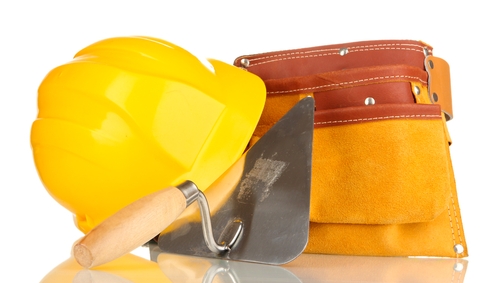
House building activity is continuing to surge, recovering from the low levels seen in recent years.
Statistics New Zealand said a boost in new apartments has seen the seasonally adjusted number of new houses consented rise by 1.9% in February 2013. While apartment numbers vary a lot from month to month, figures continue to show a positive trend for new houses.
There were 1,351 non-apartment dwellings consented in February 2013, and the seasonally adjusted number fell 3.6% after a 9.5% increase in January.
In February 2013, 1,493 new dwellings (including apartments) were consented, up 24% on February 2012. During the last year, the monthly number of new apartments consented ranged from 39 to 235. Of the 142 new apartments consented in February 2013, 98 were retirement village units.
“The trend for new houses continues to grow, whether or not apartments are included. The number of new houses consented has been trending up for almost two years and is now 53 percent higher than the most recent low point in March 2011,” industry and labour statistics manager Blair Cardno said.
“This trend for the number of new houses, including apartments, is now at its highest level since May 2008.”
Housing consent numbers for February 2013, compared with February 2012, were:
1,493 new houses, including apartments (up 24%)
1,351 new houses, excluding apartments (up 18%)
142 new apartments (up 80 from 62).
The largest increase in the number of new houses was in the Auckland region, up 160 (51%) to 473. This includes 130 apartments, up from zero in February 2012. Canterbury had the second-largest regional increase in new houses, up 91 (35 percent) to 351. There were no new apartments consented in Canterbury this month, compared with 16 a year ago.
The seasonally adjusted number of new non-apartment houses fell 3.6 percent in February 2013, after 9.5% growth in January.
Earthquake-related building consents in Canterbury totalled NZ$35 million in February 2013, including 55 new houses. This is the lowest monthly total since April 2012.
The value of non-residential building consents fell by 25% to NZ$285 million, compared with February 2012.
Building consents - residential
Select chart tabs
6 Comments
Any growth in numbers of houses will seem large from the anaemic amount that have been constructed over the last 4 years.
Great graph, scroll it back to 2004 and 2002 and you can see that New Zealand is building 50% of the houses it was back then.
Maybe there could be a statistic for Affordable Home Construction, then we could all get a clear indication of the supply that is being constructed?
http://www.dbh.govt.nz/UserFiles/File/Publications/Sector/pdf/residenti…
The government report on housing affordability has the info.
- Most of Auckland’s affordable housing is provided for through the construction of higher density typologies such as apartments, townhouses, flats and studios. Very little standalone housing can be built at ‘affordable’ pricing levels.
- The supply of higher density typologies dropped off dramatically in the past five or so years.
- Therefore, the supply of affordable housing has dropped off dramatically in the past five or so years.
It clearly shows that suburban sprawl will NOT provide affordable housing.
One example may prove little but a company near Thames that assembles house frames and trusses has probably increased its ouput some ten or twenty times over recent months. This is estimated by the products sitting waiting to be collected as I walk past with my dog most evenings.
a fall in new housing permits....why?....we have been told growth was superb this last quarter...yet fewer peasants are planning to build...is it the gst theft...or the realisation that there has to be a nasty end to the cheaper credit games...and so many jobs lost means more are fearful of being next...
Building is a mugs game..been there done that...a battle all the way...Old is better...old means more DIY is possible...that means less is stolen by govt as tax...Old means a real section, not a joke!
When the frenzy started gathering momentum in the US, Bush trumpeted a stat showing how home ownership rates went up couple points. Once the bubble burst, it went back the other way. Same thing is now happening here; if prices are going up, it's because people are buying. If immigration static, then those new owners in most cases moved out of their rented property, leaving it vacant. Perhaps to a lesser degree, there are owners who bought another property, which will be put straight onto rental market. So rents will go down, if the prices are going up. If it continues, sooner or later, the new owners will look back and realise it's cheaper to rent and may decide to go back to it. Their selling will begin the correction. Why would they do this? Because, like most people out there, they live week-to-week, and that's it.
Don't get too excited - most of those apartment consents will be for retirement developments in complexes run by Metlife Care, Summerset, Selwyn Foundation etc.

We welcome your comments below. If you are not already registered, please register to comment.
Remember we welcome robust, respectful and insightful debate. We don't welcome abusive or defamatory comments and will de-register those repeatedly making such comments. Our current comment policy is here.